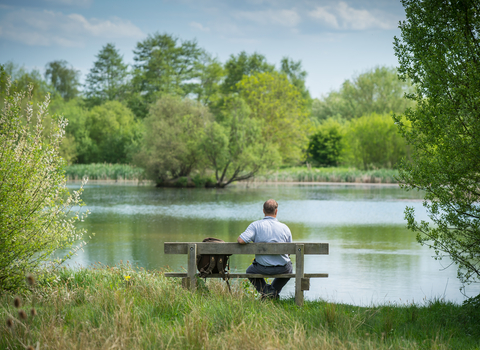Surveys should be carried out by professional ecologists, registered with CIEEM. When surveys involve protected species, such as bats, great crested newts or dormice, the surveyor should hold a license from Natural Resources Wales. Surveys should be carried out at the right time of year for the species and habitats, such as April to October for flowering plants, or March to June for Great Crested Newt. Surveys do go ‘out of date’ because wildlife can change from year to year. Surveys over a year old may need to be repeated.
Surveys should take place before the planning application, and not be requested as conditions with planning permission. This is required by national policy in TAN 5 (6.2.2)
Preliminary Ecological Appraisal – this survey should look at the existing habitats and species on the site, value for biodiversity, and the potential for protected species to use the site. Part of the survey should include a desk study including a search from a biological records centre to see what wildlife has previously been recorded from the site and surrounding area, the history of the site, and whether the site is protected for its wildlife value. The survey should also look at the wider area to see whether wildlife nearby could be affected by development. If it is likely that protected species are present on or near the site, further surveys may be needed.
Bat & Bird survey – when buildings are demolished or modified, they should be checked for nesting birds and roosting bats. The level of survey needed can vary depending on the age and type of building, and the proposed development.
Environmental Impact Assessment (EIA) – Some larger developments and certain types of development require an Environmental Impact Assessment. This is a detailed report which predicts the effect of the proposal on air, water, noise, and landscape, as well as biodiversity. It will include plans to reduce the negative effects, and evaluate any remaining effects. The EIA process often begins with EIA Screening to see whether EIA is needed, and includes EIA Scoping to see what issues should be included within the surveys and report.
Habitat Regulations Assessment (HRA) and Appropriate Assessment – when a development could affect a Special Protected Area (SPA) or Special Area of Conservation (SAC), HRA is needed. There are several stages - first, Screening is needed to find out whether the site would be affected, and this is followed by Appropriate Assessment to see whether any negative effects can be mitigated. HRA must consider the effect of the development alone, and also in combination with other plans and development already taking place.
In order to deliver Net Benefit for Biodiversity, surveys should consider the diversity, extent, condition and connectivity of the ecosystems in and around the site. Proposals should consider the potential impacts and how to improve ecosystem resilience.

